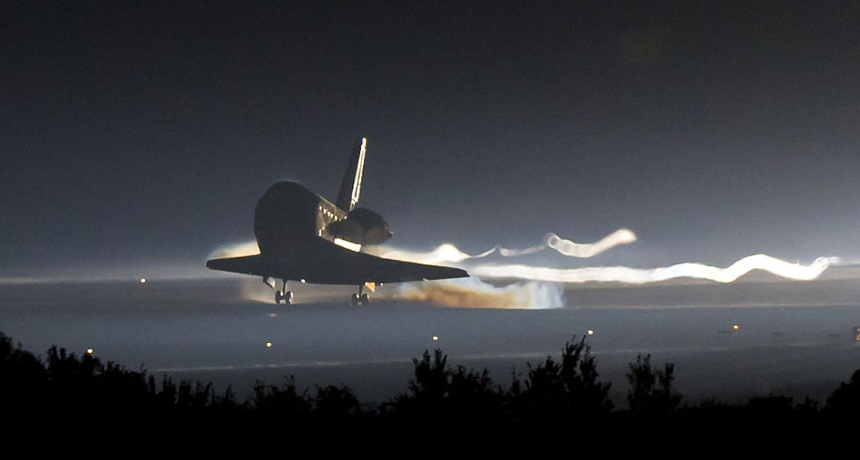Bacteria starved in space grow better

Bacteria that flew aboard the STS-135 mission, shown landing, grew better under certain conditions than similar microbes grown on Earth.
NASA

Bacteria that flew aboard the STS-135 mission, shown landing, grew better under certain conditions than similar microbes grown on Earth.
NASA